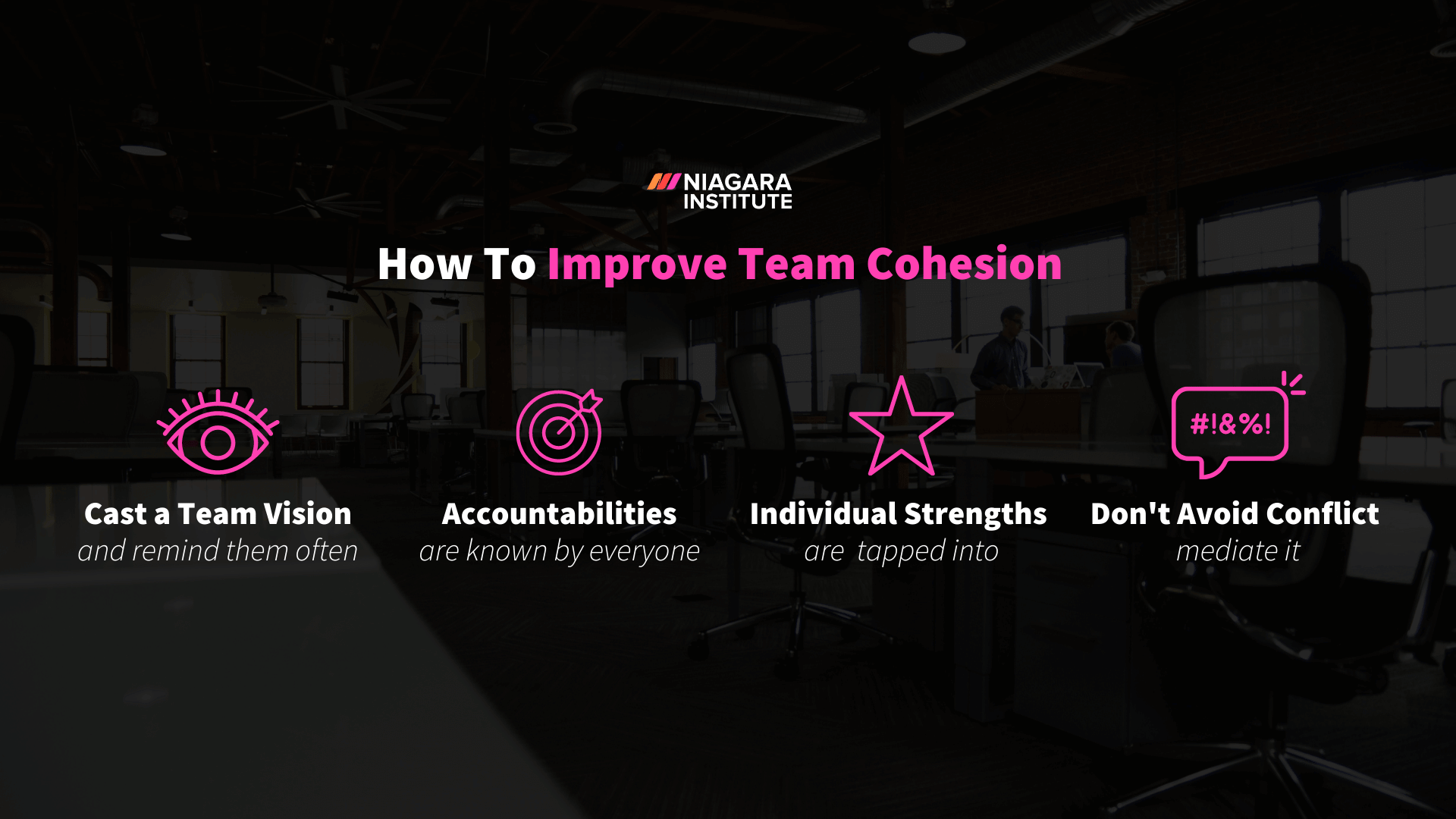6 min read
Creating Team Alignment: DIY Team Building Workshop
Leading a team can sometimes feel like herding feral cats when trying to get everyone focused on the same mission, aligned on priorities, and moving...
3 min read
 Michelle Bennett
:
Mar 25, 2021 5:36:00 AM
Michelle Bennett
:
Mar 25, 2021 5:36:00 AM
.png)
A cohesive team is entirely capable of achieving its goal or mission. But without a leader casting the vision, providing role clarity, recognizing each other's strengths, and mediating conflict, a team's cohesiveness is left to chance. That's because ensuring group cohesion at every step in the journey takes intentional effort on the team leader's part.
To help you, we've outlined four team cohesion strategies that will amplify team connection and performance.

As a team leader, never underestimate the power of a strong vision. Casting a vision, or visioning, means helping people see what you see. It means giving team members a reason "why." Why is the work you are doing valuable? What will be made possible by doing it?
A Harvard Business School professor explained that "unless you win support for your ideas, big ideas never seem to take hold or have the impact you want. Our research has shown that 70% of all organizational change efforts fail, and one reason for this is [leaders] don't get enough buy-in, from enough people, for their initiatives and ideas."
By taking the time to cast a team vision from the get-go, you give individuals a sense of purpose, but as the leader, you then have something to unite and align team members around through the highs and lows of teamwork.
Let's take it one step further and provide you with a narrative formula to follow. This framework comes from sales but can be applied in many different situations, including casting a vision. Zuora's sales presentation deck, touted as the "greatest sales deck ever," gives you the five steps to creating a narrative that can be used to casting a vision that resonates and inspires a team to follow your lead and take action.
Remember that it is not enough to cast your team vision once at the beginning of the journey. Creating team cohesion is an ongoing process and can be assisted by often reminding the team of the vision. In addition, it reminds everyone why they are working as hard as they are and what is made possible by doing so, which is a massive motivator for continued collaboration and teamwork.
Team cohesion relies on individuals feeling like they are "in it together" and that everyone on the team is carrying their weight. As a team leader, you can promote this by intentionally defining the accountabilities and responsibilities of every team member and then sharing them with the entire team. Doing so creates a sense of dependability within the group, which is one of the characteristics of a high-performing team, according to Google's Project Aristotle.
On top of that, it creates a team culture of transparency and interconnectedness that encourages team members to hold each other accountable and help one another when a setback or problem arises, all of which positively contributes to team cohesion.
Biases, whether they are conscious or unconscious, can derail team cohesion. One way to counteract these biases is to unite the team around each other's unique strengths as the team leader.
According to a study published in the book Helping People Change, doing so "triggers hormones that essentially stimulate people to be more creative, more positive, and engaged, enabling them to grow and change."
In other words, it's well worth the time and effort to identify the strengths of the individuals on your team and explain to the group as a whole why having them will help everyone achieve the team goal.
It's natural on a team of highly invested and engaged people for conflict to arise. While you may instinctively think of conflict at work as a bad thing (which, of course, it can be if left unchecked), mediated conflict can present an opportunity for critical thinking, innovation, and creativity.
Not to mention, it may help you identify barriers to team cohesion that may have otherwise gone left unseen. Remember, as a team leader; it's up to you to use your sound judgment and decision-making skills to decide if the potential benefits of mediating a conflict outweigh the costs of quickly and effectively settling it.
It takes an effective team leader to ensure a team works cohesively, even when things get tough, and barriers to success pop up. Though by casting a vision, sharing responsibilities and accountabilities, tapping into individual strengths, and mitigating conflict, you will be well on your way to ensuring your team remains cohesive right until the very end. Of course, you may also consider developing your team leadership skills, which can help ensure you are optimally successful.
.png)
6 min read
Leading a team can sometimes feel like herding feral cats when trying to get everyone focused on the same mission, aligned on priorities, and moving...

6 min read
Henry Ford once famously said, “Coming together is a beginning, staying together is progress, and working together is a success.” Most leaders would...
.png)
6 min read
Would your team members say, “I know what is expected of me at work”? Gallup has spent the last thirty years researching this topic by evaluating...